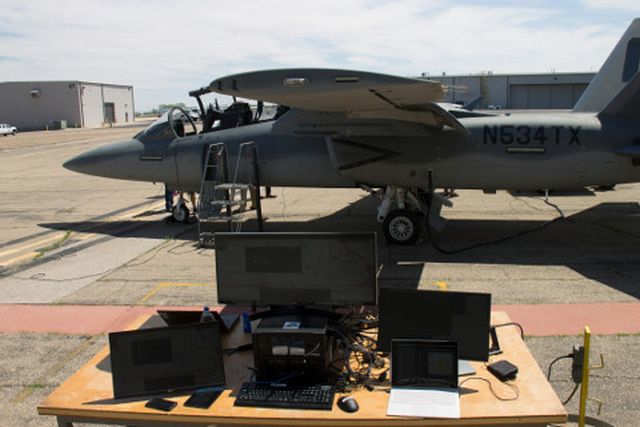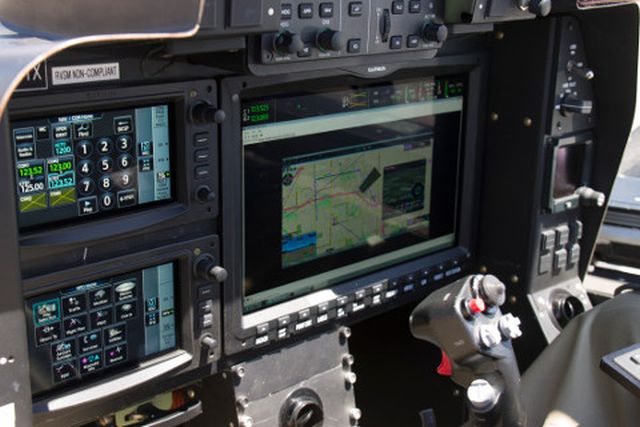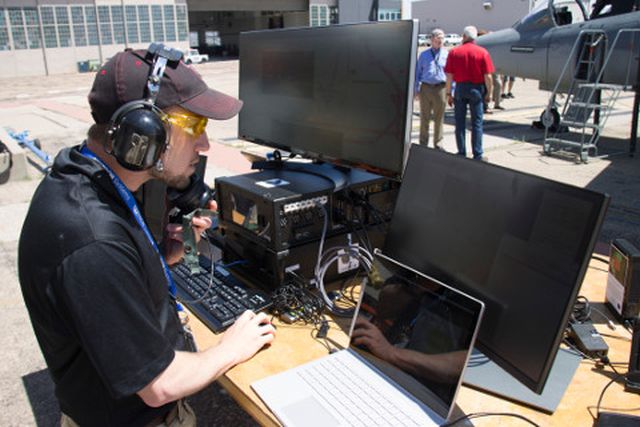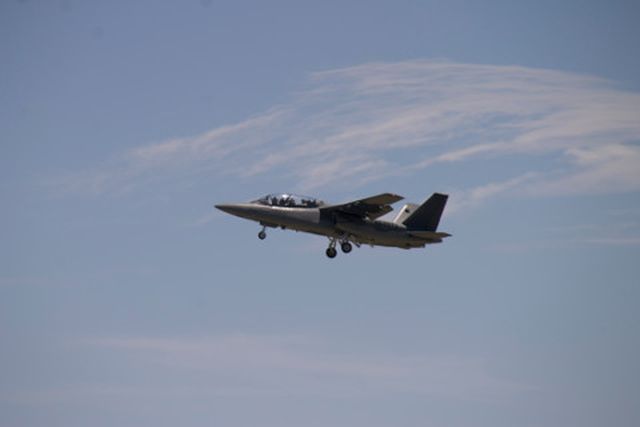“Together, Synturian command and control technologies and the Scorpion jet take this capability to the next-level – increasing Textron Systems’ Level of Interoperability (LOI) from 3 to 4, while enabling multi-vehicle command and control from a moving airborne asset,” describes Textron Systems Vice President of Programs Wayne Prender. “Through Textron Systems’ experience in the field and Textron Aviation Defense’s expertise, we realize the revolutionary benefits that manned-unmanned teaming can deliver to keep manned assets out of harm’s way.”

During the rapid proof-of-concept demonstration, the Textron engineering team installed Synturian software, part of Textron Systems’ family of multi-domain control and collaboration technologies, into the cockpit mission computer of the Scorpion jet. The team simulated a NIGHTWARDEN Tactical Unmanned Aircraft System and an Aerosonde Small Unmanned Aircraft System (sUAS) for the demonstration, which featured flight acquisition and control of the simulated air vehicles and sensors (up to LOI 4). Using Synturian, the Scorpion aircrew set up flight route waypoints, established surveillance orbits, steered the sensor, and changed the unmanned aircraft heading, airspeed, and altitude. The simulated unmanned aircraft were then able to operate without further aircrew interaction, officials say.
“The ability to easily and intuitively control unmanned systems from the cockpit of a manned tactical aircraft is a game-changer,” says Textron Aviation Defense Senior Flight Test Pilot Brett Pierson, after flying the Scorpion-Synturian test missions. “The tactical and operational ramifications of this new capability are enormous. Further extending Scorpion’s sensor suite and penetrating a weather layer to generate target coordinates; or creating a triangulated solution independently; or adding layers to a multi-spectral fused solution, deliver an entirely new set of tactical capabilities that have never been possible in a fighter-type aircraft.”

Textron Systems and Textron Aviation Defense officials plan to advance integration efforts, testing and demonstrating this capability with fully operational unmanned aircraft worldwide.
Synturian control and collaboration technologies, designed to empower situational awareness and informed action, includes two main product lines: Synturian Control, a multi-platform, multi-vehicle, multi-domain control system that enhances collaboration and dissemination of information; and Synturian Remote mobile, network-strengthened tools that enhance situational awareness through timely information and collaboration. Synturian Control and Synturian Remote package these capabilities into small, lightweight hardware form factors that are scalable based on customer needs.
The Textron Aviation Defense Scorpion jet is a tactical aircraft designed to equip the warfighter with a technological advantage while delivering exceptional mission readiness at low acquisition, operating, and training costs. It features an 85-cubic-foot center payload bay, field-configurable mission packages, six hard points, fast dash speeds, and extended endurance and loiter time. Built to excel as an affordable multi-role platform, the Scorpion jet delivers ISR, armed reconnaissance, CAS, maritime and border patrol, and jet training capabilities.
Textron Systems’ businesses develop and integrate products, services, and support for aerospace and defense customers, as well as civil and commercial customers, including those in law enforcement, security, border patrol, and critical infrastructure protection around the globe.
Textron Inc. is a multi-industry company known for brands such as Bell, Cessna, Beechcraft, Hawker, Jacobsen, Kautex, Lycoming, E-Z-GO, Textron Off Road, Arctic Cat, Textron Systems, and TRU Simulation + Training.

Learn more
-
Bookmark http://www.sae.org/news to keep pace with the latest aerospace technology news & information.
-
NASA and AeroVironment are building a helicopter for Mars
-
Martin UAV VTOL unmanned aircraft taps Persistent Systems Wave Relay data link technology
-
Read SAE International content on unmanned aircraft systems
-
Learn about AeroPaks, a cost-effective and convenient way to access the 8,000+ SAE aerospace standards, specifications, recommended practices, and resource documents available in SAE MOBILUS. In addition, AeroPak customers can search and download any of the nearly 15,000 historical versions of SAE’s Aerospace Standards and Aerospace Material Specifications.
-
Bookmark http://www.sae.org/news to keep pace with the latest aerospace technology news & information.
-
Subscribe to SAE MOBILUS for access to more than 200,000 resources covering a wide range of technologies all surrounding the aerospace, automotive, and commercial vehicle industries. These content types include: aerospace standards, ground vehicle standard, historical standards, technical papers, eBooks, magazines, and video.
Courtney E. Howard is editorial director and content strategist at SAE International, Aerospace Products Group. Contact her by e-mail at courtney.howard@sae.org.

Continue reading »